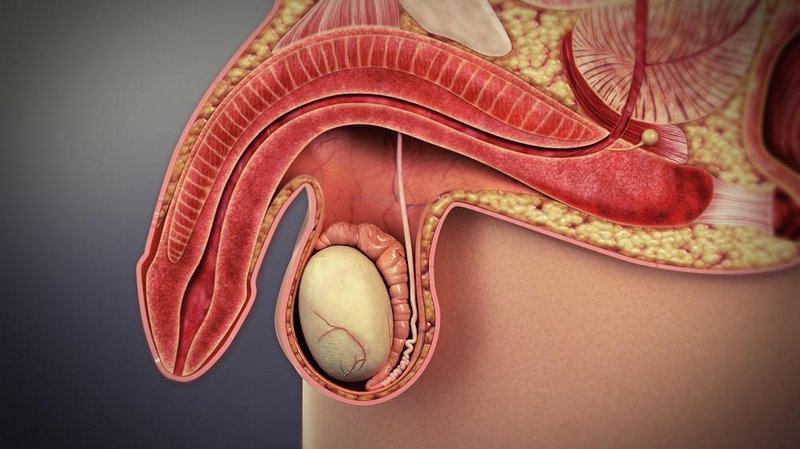Erectile dysfunction (ED), commonly known as impotence, refers to the inability of men to continuously obtain or maintain a sufficient penile erection to complete a satisfactory sexual life.
ED is one of the most common sexual dysfunctions in men. It is a chronic disease that affects physical and mental health.
It not only affects the quality of life of patients and their partners, but may also be an early symptom and danger signal of cardiovascular disease.
Erectile dysfunction (ED) is a common and frequently-occurring disease in adult males. The Massachusetts Male Aging Study (MMAS) found that among 1290 men aged 40 to 70 randomly selected in 11 communities in Boston, the overall prevalence of ED was 52%, and the prevalence of mild, moderate and severe ED were respectively 17.2%, 25.2% and 9.6%.
Disease Type
There are many classification methods for ED, which can be classified according to different methods such as medical history, pathophysiology, onset time, onset inducement, lesion degree and complexity.
The most common is to classify it according to the etiology, that is, it is divided into psychological ED, organic ED and mixed ED (both exist, or psychological ED is the main type, or organic ED is the main type).
Organic ED: Refers to permanent ED caused by damage to an organ or tissue caused by various reasons.
Psychological ED: Refers to ED caused by mental and psychological factors such as tension, stress, depression, anxiety, or emotional discord between husband and wife.
In addition, according to the sequence of onset, it can be divided into primary ED and secondary ED.
According to the degree of lesion, various erectile function scales such as the International Index of Erectile Function-5 (IIEF-5) can be used for measurement.
According to the complexity of the lesion, it can be divided into simple ED and compound ED.

Cause Of Disease
In order to make the penis erect, it is necessary to ensure that the penis has normal blood vessel function and nerve afferent and efferent function, sufficient male hormones and sufficient libido. Therefore, problems in any of the above links can lead to erectile dysfunction
According to the etiology, ED can be divided into two categories: psychological ED and organic ED.
The former is caused by the patient’s own mental and psychological factors.
The latter can be caused by vascular, neurological, surgical and traumatic factors.
Psychological ED
Psychological pressure is closely related to ED, such as:
Disharmony between husband and wife
Asymmetry or lack of sexual knowledge
Bad sexual experience
Work or economic pressure
Incorrect understanding of media propaganda
Fear of disease and adverse drug reactions
At the same time, ED can also cause depression, anxiety and physical symptoms.
Organic ED
A large number of men under the age of 40 suffer from erectile dysfunction.
In the past, the vast majority of cases were considered to be psychogenic in nature.
Studies have identified an organic cause of ED in 15-72% of men under the age of 40.
The main causes of organic etiology can be roughly divided into the following reasons:
Vascular Causes
Nervous Causes
Surgery and Trauma
Diseases Of The Penis Itself
Other causes include endocrine disorders, chronic disease, or long-term use of certain medications.
Predisposing Factors
Age: Epidemiological data show that the prevalence of ED increases with age.
Education Level: Low education level may be related to ED.
Sexual Function Status: For example, there have been erectile difficulties in the past 6 months, sexual arousal has decreased compared with puberty, and sexual fantasies or sexual dreams have decreased.
Psychological Factors: Mental disorders can lead to ED, and conversely, ED can lead to psychological disorders.
These factors may be developed from childhood (eg, sexual abuse, negative attitudes about adverse childhood experiences), individual psychological factors (eg, body image, depression, performance anxiety, alexithymia), and/or relational factors (eg, such as decreased intimacy, partner conflict).
Mental illness is also one of the common causes of ED. The degree of sexual dysfunction was positively correlated with the degree of mental illness. For example, the incidence of ED in patients with schizophrenia ranges from 16% to 78%.
Bad Lifestyle
Being Overweight: Can cause or worsen ED.
Smoking: This is an independent risk factor for vascular ED and may enhance the effects of other risk factors.
Alcohol: It can have a wide range of inhibitory effects on the central nervous system including the erectile center, and alcohol can also cause a decrease in serum testosterone levels. Alcohol can also cause anxiety and tension in drinkers, resulting in erection failure.
Disease
Prostatic Hyperplasia and Lower Urinary Tract Symptoms (LUTS):Epidemiological survey data found that lower urinary tract symptoms (LUTS, generally referring to a variety of urinary tract symptoms) and benign prostatic hyperplasia (BPH) in elderly men are related to sexual dysfunction.
Overall, ED and cardiovascular disease share the same risk factors, such as obesity, diabetes, dyslipidemia, metabolic syndrome, lack of exercise, smoking, etc.
Symptoms of Erectile Dysfunction
The symptoms of erectile dysfunction generally manifest in the following aspects:

Slow or difficult erections.
Although you can get an erection, the hardness of the erection is not enough, it is difficult to penetrate the penis or the vagina cannot be inserted at all.
Although you can get an erection, the erection cannot be maintained with sufficient hardness, resulting in weakness or inability to ejaculate after ejaculation.
Seek Medical Attention
When the patient has multiple or persistent symptoms of erectile dysfunction.
Or with diabetes, cardiovascular disease and other known diseases associated with ED should be diagnosed as soon as possible.
If diagnosed, it is necessary to receive formal treatment as soon as possible.
Since ED may be an early symptom and danger signal of cardiovascular disease, it is necessary to see a doctor in time.
Diagnostic Process
Detailed and accurate medical history collection is very important for doctors to diagnose and evaluate ED.
The doctor will fully understand the patient’s penile erectile function and whether the patient has possible causes and related risk factors that lead to ED.
In order to understand the accurate medical history, the doctor may encourage the patient’s spouse to participate in the consultation.
Past medical history inquiry mainly includes sexual life history, history of concomitant diseases (such as hypertension, diabetes, cardiovascular disease, nervous system disease), history of surgery, trauma, drug history, history of bad living habits or hobbies (such as smoking, alcoholism, drug abuse etc.).
On this basis, the doctor will evaluate the patient through two scales, the International Erectile Function Questionnaire-5 (IIEF-5) and the Erection Hardness Assessment (EHS), to assist in the diagnosis.
How To Prevent Erectile Dysfunction?
Here are 7 preventive measures for erectile dysfunction:
Properly handle the relationship between husband and wife, maintain harmony, and have a harmonious sex life.
Pay attention to keep the perineum clean to avoid infection.
Treatment of chronic diseases such as chronic prostatitis, long-term chronic inflammatory stimulation, and discomfort in the perineal area can have certain adverse effects on the patient’s psychology and lead to ED.
Patients with hypertension and diabetes are high-risk groups for ED, and patients with hypertension and diabetes should actively control blood pressure and blood sugar.
Enhance physical fitness, proper physical exercise.
Eat a balanced diet, such as: adequate amount of fruits and vegetables.
Maintain adequate sleep, adequate sleep can make our body better and eliminate fatigue faster.
